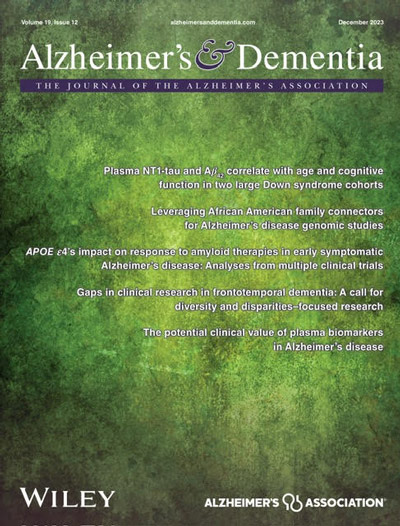A systematic comparison of ATN biomarkers for monitoring longitudinal cognitive changes in Alzheimer's disease
Abstract
INTRODUCTION
With anti-amyloid beta (Aβ) therapies approved for Alzheimer's disease (AD), surrogate biomarkers are needed to monitor clinical treatment efficacy. Therefore, we systematically compared longitudinal changes in A/T/N biomarkers (amyloid-positron emission tomography [PET], tau-PET, plasma phosphorylated tau at threonine 217 [p-tau217], and magnetic resonance imaging) for tracking cognitive changes.
METHODS
We analyzed longitudinal biomarker and cognitive change rates from the Alzheimer's Disease Neuroimaging Initiative (N = 141) and Anti-Amyloid Treatment in Asymptomatic Alzheimer's (A4) and Longitudinal Evaluation of Amyloid Risk and Neurodegeneration (LEARN) (N = 151), estimated using linear mixed models. Using linear models, we tested biomarker changes as predictors of cognitive changes, comparing predictive strengths across biomarkers using bootstrapping.
RESULTS
Tau-PET, plasma p-tau217, and cortical thickness changes accurately tracked change rates in Mini-Mental State Examination, Alzheimer's Disease Assessment Scale-Cognitive Subscale 13-item version, Clinical Dementia Rating-Sum of Boxes, and Preclinial Alzheimer Cognitive Composite scores. In contrast, amyloid-PET change rates were not linked to cognitive changes.
DISCUSSION
Plasma p-tau217 offers a cost-effective AD-specific alternative to tau-PET and could potentially be implemented for monitoring cognitive changes in AD trials, while amyloid-PET lacks utility. Cortical thickness changes accurately track cognitive changes but may be confounded by pseudo-atrophy in anti-Aβ treatments.
Highlights
- Longitudinal changes in tau-PET, plasma p-tau217, cortical thickness – but not amyloid-PET – effectively track cognitive decline.
- Cortical thickness may be confounded by pseudo-atrophy in anti-Aβ trials.
- Plasma p-tau217 is a robust and cost-effective alternative to tau-PET as an AD-specific surrogate biomarker for monitoring cognitive changes.


 求助内容:
求助内容: 应助结果提醒方式:
应助结果提醒方式:


